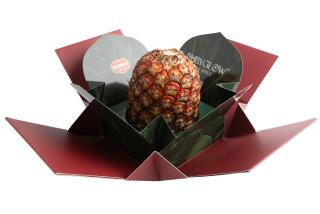AROUND HOME : Notes on Passion Fruit, Bushtits and Frank Lloyd Wright Chairs : IN THE KITCHEN : Passion Play
- Share via
CAN’T YOU JUST imagine the first person who looked at this strange little fruit, wondering whether or not to try it? From the outside, it looks sort of like a maroon egg, and when it is opened up, there are only some sorry-looking purple seeds.
All it takes, however, is eating one seed. They taste . . . like all the good things in the tropics rolled into one. Like sun, sand, and bright blue seas. Like waterfalls tumbling through the jungle, and flowers with petals the colors of sunset. As good as the fruit tastes, it smells even better. “What’s the best name for this fruit?” asked the first sampler.
The answer: passion fruit.
Despite its odd appearance, the passion fruit has become the kiwi of the late ‘80s. A year ago, hardly anybody knew what passion fruit was. This year, it is everywhere. Stroll by the fancy fruit section of any supermarket, and there they sit in all their wrinkled glory (they are fabulous). Look in the juice section--passion fruit has been pressed into all sorts of concoctions. It is even added to sparkling water.
That is just the beginning. Passion-fruit juice occupies a place on the shelves of liquor stores. And there is now passion-fruit tea, a heady brew with an impossibly potent perfume. Brew it up, and you’d swear that you were drinking sunshine.
It appears that there will be a lot more passion in our future. It was hard to get behind the kiwi movement, but this time it couldn’t happen to a nicer fruit.
Passion fruit is about $1 apiece and is available at many supermarkets. Alize, Cocktail de France, a blend of natural passion-fruit juice and cognac, is available at most large liquor stores for about $12 a bottle. Passion-fruit tea is available at Il Panino cafe at the Museum of Contemporary Art, by the cup or bag ($5).
More to Read
Eat your way across L.A.
Get our weekly Tasting Notes newsletter for reviews, news and more.
You may occasionally receive promotional content from the Los Angeles Times.










